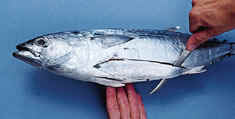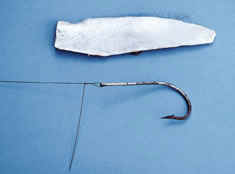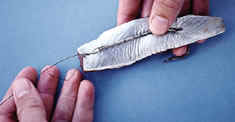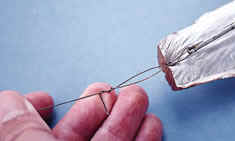This simple trolling bait will tempt all manner of offshore fish.
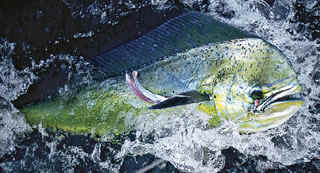
|
Strip baits may not be as fancy as swimming ballyhoo or mullet, but they sure put fish in the boat. Besides being easy to rig, strip baits offer the advantages of natural scent and taste, and they're generally small enough for offshore fish to eat in one bite, which results in simple, solid hook-ups. Best of all, everything from dolphin to billfish will eat them.
When I want a bait that's different in size and action from the others in my spread, out goes a strip. I also deploy strip baits when I know fish are in the area, but are not responding to the more traditional lures I'm pulling.
Strip baits are especially effective on dolphin. For example, I like to put a strip or two in play when I'm competing with other boats for picky dolphin. In this situation, success often hinges on showing the fish something they're not used to seeing. I've also turned to strip baits on those special days when the dolphin have depleted my supply of ballyhoo. When this happens, I carve some belly sections from the dolphin I've already caught, rig them as a strip baits and continue to catch fish.
Versatile Performer
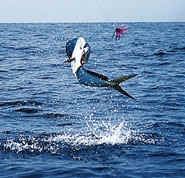 Dolphin will often seek out strip baits with reckless abandon. |
Another neat thing about strip baits is that they can be fished anywhere in the spread. They will skip and splash on the surface when fished straight off the flat lines, and they're 'rigger-friendly, too. In fact, when a fish eats one from a 'rigger, a drop back is rarely required, as the bait's small size, coupled with the slack line, virtually ensures a solid hook-up. Furthermore, the scent and taste of a fresh strip bait often fools a fish into holding onto it longer or coming back for another strike.
While primarily fished on the surface, strip baits also produce when rigged behind a trolling sinker, planer or downrigger. On a recent day trip to the Bahamas, I fished a skirted strip bait off a high-speed planer. The action was dreadfully slow, but that deep-trolled strip bait produced the only fish of the day '’’ a big sailfish!
Artificial strip baits are also quite effective, and don't need to be cured or refrigerated for storage. I've fished them many times, and can attest to the fact that they do indeed catch fish. However, given a choice, I prefer natural strips over plastic, as I believe the smell and taste of real fish flesh is hard to beat.
Make 'Em Yourself
Acquiring strip baits is easy. The next time you catch a bonito, dolphin, skipjack or mackerel, carve a long, narrow section from its belly. Then trim this section into a tapered strip. As you make the strip, bear in mind that the grain of the meat should flow toward the 'tail'� of the bait; otherwise, the strip will soon ball up and wash out.
After you've carved out several strips, place them in a jar or air-tight bag and thoroughly cover them with Kosher salt. The salt draws out moisture and toughens the flesh. If you don't plan on using the strips within 24 hours, freeze them. A well-cured strip bait will endure hours of trolling.
If you're making a strip bait while on the grounds, simply carve a strip from the belly of a fish you've just caught, rig it and send it right out. A fresh strip won't last quite as long as a cured one, but it will hold together for a good bit. In this situation, adding a trolling skirt or small lure ahead of the strip will increase its longevity.
There are several ways to rig a strip bait. The method described in the accompanying sidebar is super-quick yet very effective. Providing you have a few of the hook/leader rigs prefabricated and a strip bait ready to go, pairing the two can be done in less than a minute. The sooner your strip bait is in the water, the sooner it can work its magic.
|
|


